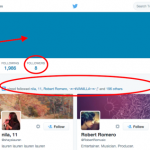An Influencer’s Perspective On Amazon Spark
An Influencer’s Perspective On Amazon Spark
by Holly Pavlika , Columnist, February 14, 2018
After Amazon Spark launched a few months ago, we conducted a study of our influencer community and found few even knew about Amazon’s foray into influencers. We had the opportunity to speak with one of our influencers who was invited to join the program. She provided her assessment of the platform and what Amazon Spark needs to do to satisfy influencers and make its program more successful.
First, Amazon needs to work on the onboarding process. “There was nothing, just an invitation to the program. The invite included a few sentences on how to add items to your ‘page’ and, even though I was approved as an influencer, I still needed to get approved before I received a full URL to my own page.”

Despite the concerns around onboarding, setting up the page is easy. An influencer finds a product they want to put in their Amazon Spark store, clicks “Add to list,” and from that dropdown menu, they select their page. The influencer then has the option to drag items to set the order of display. Next, the influencer clicks on the “Product Comments” tab to write a personal review and set the priority on their page. There, when a shopper views each item, and if they add comments, the influencer will see the commentary.
But Amazon truly benefits from this process first, as they have access to influencer reviews and comments before the influencers are paid for their efforts, including clicks and sales.
There are limited options for true influencer marketing capabilities.
- Due to the format of the page, it is simply a showcase of curated products she’s selected, making it affiliate marketing and not a true channel for influencer marketing.
- Although Amazon Spark provides links to the influencer’s social channels, links alone will not drive much engagement for the influencer’s brand unfortunately.
- There is no opportunity for the influencer to post a bio or merchandise their brand, which goes against influencers relationship building 101.
- The only way Amazon Spark will get engagement that will drive revenue for the influencers is if they promote the page themselves. It is doubtful that influencers will take the time to do so when opportunities with alternative services and platforms are more lucrative and guaranteed.
Amazon should make multiple updates to increase benefits for influencers.
1. Allow the influencer to separate items by section or categories.
“It’s simple to create a page but the layout and format is less than desired. For example, Amazon should offer the ability to section it into categories, so in a side bar you could see Kitchen Electrics, Cookbooks, Ingredients, etc. This format would be easier for folks to choose what they are interested in. Not everyone is into Instant Pots and they may only want to know what type of chocolate extract I recommend, but per current design they have to scroll,” said the influencer.
2. Add a search functionality in the page.
3. Enable scroll functionality.
4. Let influencers personalize the page.
“There’s no real ‘brand’ on each page other than a free-form text field where influencers can give their name. Empower us to put our brand behind the product other than just our ability to add it to a page. The comments are nice, but it’s not intuitive for the end user to click on the image, which is very light in color thus hard to see.”
5. Add value for the influencer by allowing integration into their blog page (like an iframe).
Influencers can only provide a link to their blog. “If you can only promote a link and not have it integrated into your site, I’m not sure how much value there is in it.”
What additional advice does this influencer have for Amazon?
“It’s really nothing more than an affiliate page, but it’s better than nothing, and I do like the fact that you have to actually go into Amazon to purchase items, (as folks have more trust when they see it embedded in Amazon). But, it takes away from each brand’s identity. The overall feeling of how it’s presented is cold and very impersonal. There’s no uniqueness behind it, and comes across as ‘Hey, I don’t care about you, but I want your money so buy these things,’ and that’s not me. To be honest, there’s no real incentive for people to use these pages, and any interaction to that page is from my sole promotion.”
If there is one thing I’ve learned and recommend any brand, retailer or company, do when looking to work with influencers is that you must talk to them and create with them, not for them. This early rendition of Amazon Spark is proof of this advice.
MediaPost.com: Search Marketing Daily
(21)









